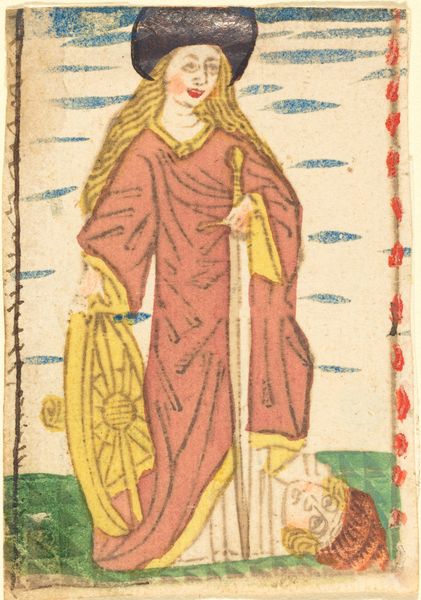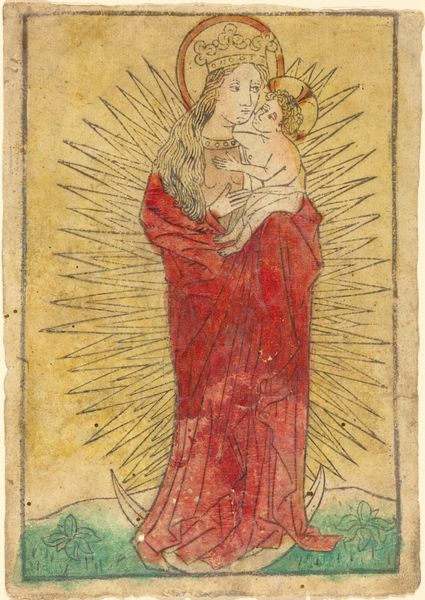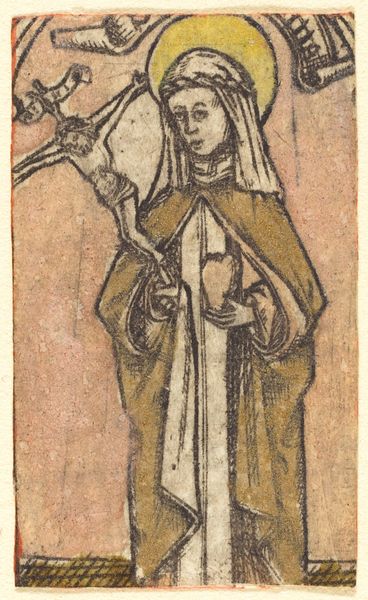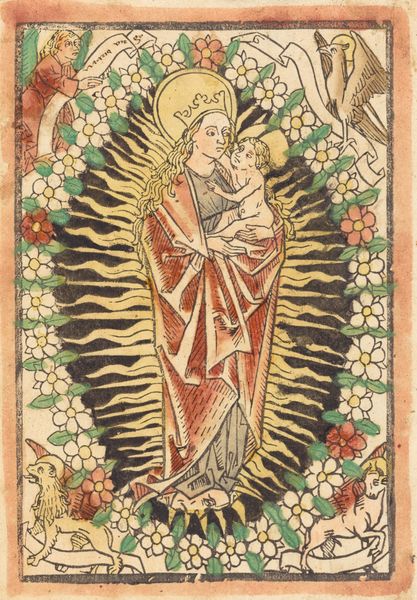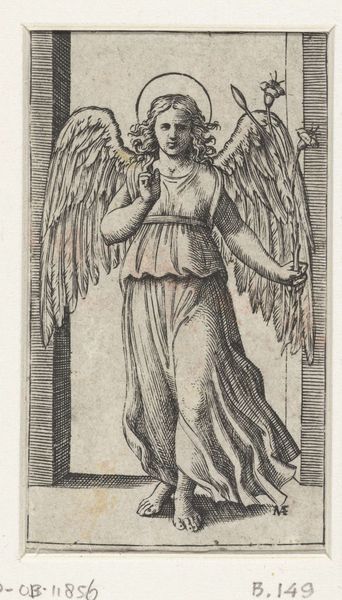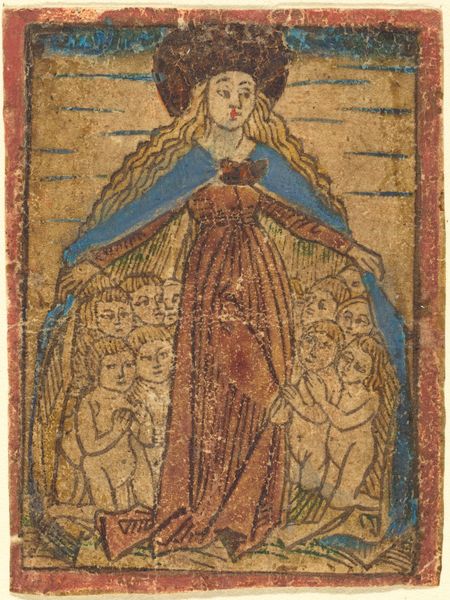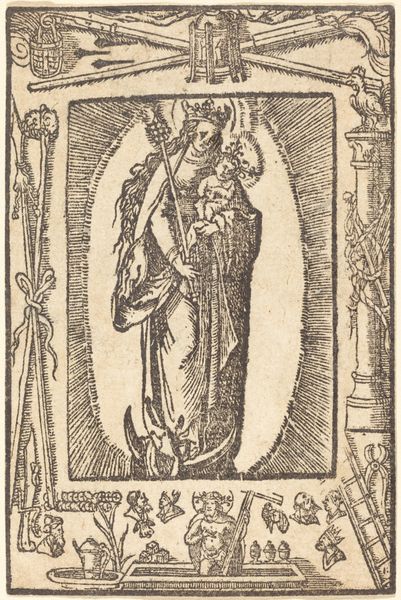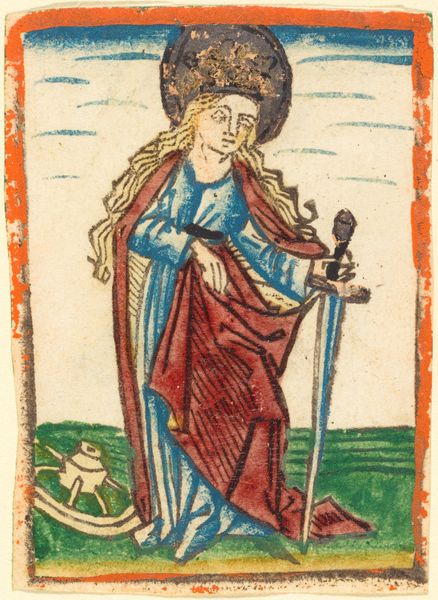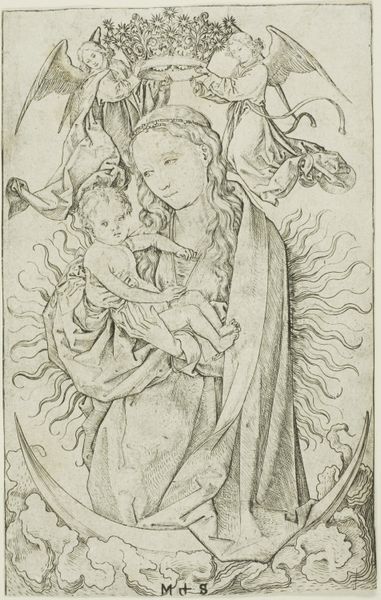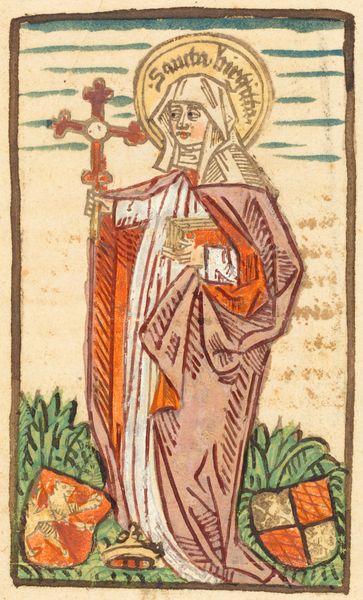
Madonna and Child in a Glory Standing on a Crescent Moon 1470 - 1480
0:00
0:00
print, ink, woodcut
#
portrait
#
ink painting
# print
#
figuration
#
ink
#
coloured pencil
#
woodcut
#
northern-renaissance
Copyright: National Gallery of Art: CC0 1.0
Curator: The print before us, created sometime between 1470 and 1480, presents the "Madonna and Child in a Glory Standing on a Crescent Moon." Its attribution remains anonymous. Editor: My immediate impression is one of fragile radiance. The linear quality of the woodcut, coupled with the delicate washes of color, creates an ethereal, otherworldly feel. It seems rather small in scale, doesn’t it? Curator: Indeed. Its diminutive size was intentional; such prints were created for private devotion. Consider how the northern Renaissance style emphasizes detail—look closely at the halo, it is achieved via meticulous cutting in the woodblock. Editor: The lines are so stark, the colour so deliberately placed; the symbolism palpable. Note, for example, the sun rays emanating from the Madonna's figure and crown. It evokes her power and divine status. Are there other recognizable symbols or semiotic values? Curator: The crescent moon, for example, is a longstanding symbol of the Virgin Mary, alluding to purity. It also draws parallels between the Virgin Mary and the Queen of Heaven, adding multiple levels to the symbol. She carries a blue orb, symbol of the earth she protects. It's quite compelling how so much information is distilled into such a compact format, isn’t it? Editor: I am drawn to the distribution network during that period and wondering: given its small size and the inexpensive medium of print, I wonder who it was targeted at? What impact did mass production techniques have on its affordability and use in people’s homes? How widely disseminated was this depiction and what would that suggest about religious worship at this time? Curator: Those questions cut right to the point, illuminating the image's value for the religious lives of regular people during that time. And, how interesting to see that even something small and perhaps inexpensive, when parsed for its graphic structure and use of iconography, possesses complexity, skill, and, dare I say, some measure of lasting aesthetic interest. Editor: For me, looking at the original context of the work, allows us to engage with this object as more than just a piece of art history. The symbolism may speak of religious contexts, but considering that distribution of religious paraphernalia occurred at an important point in modern history offers insight to this time.
Comments
No comments
Be the first to comment and join the conversation on the ultimate creative platform.

